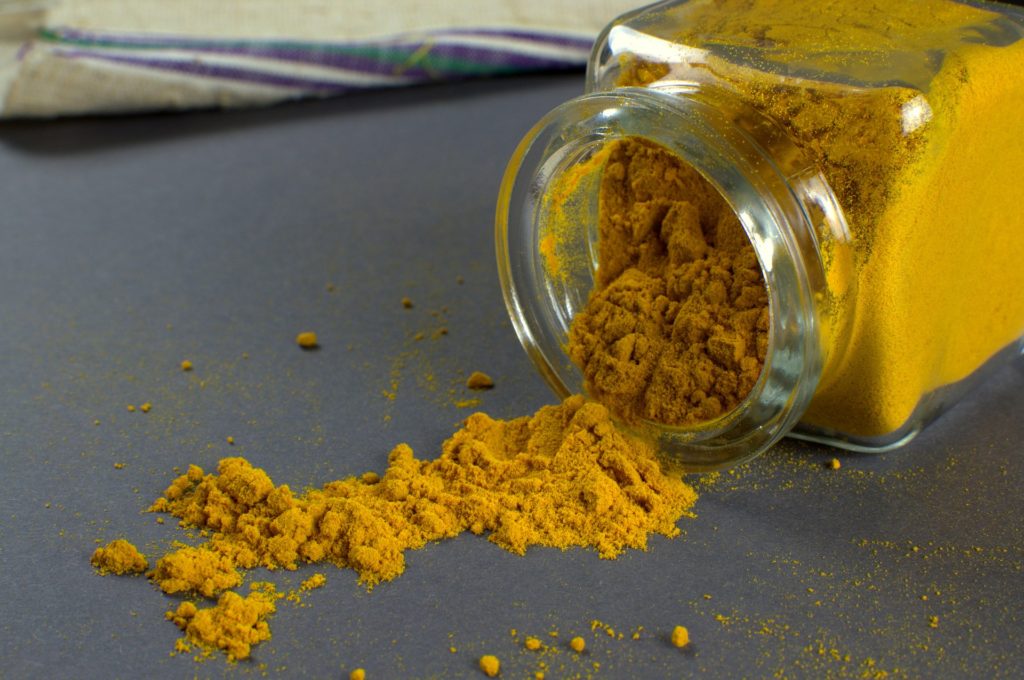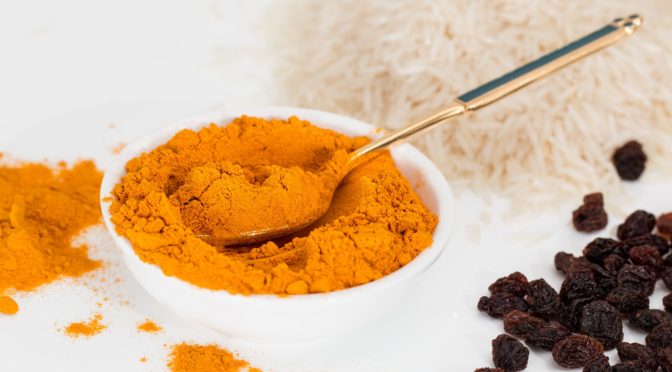Learning about turmeric and weight loss know that turmeric powder is a bright yellow powder made by dry grinding of mature turmeric rhizomes (underground stems). The use of turmeric for coloring and flavoring food, for cosmetic purposes, and for medicinal properties dates back to the ancient Vedic culture of India.
Used in almost all Indian curries, this spice has a warm, bitter taste and is used to flavor or color curry powders, mustards, butter, and cheeses. But the root of this plant is also used widely to make medicine. Turmeric is used for arthritis, heartburn (dyspepsia), stomach pain, diarrhea, intestinal gas, stomach bloating, loss of appetite, jaundice, liver problems, and gallbladder disorders.
It is also used for headaches, bronchitis, colds, lung infections, fibromyalgia, leprosy, fever, menstrual problems, and cancer. Other uses include depression, Alzheimer’s disease, water retention, and worms.
Some people apply turmeric to the skin for pain, ringworm, bruising, leech bites, eye infections, inflammatory skin conditions, soreness inside of the mouth, and infected wounds.
In foods and beverages, turmeric is used as a coloring component.
Turmeric (Curcuma longa) is a rhizomatous herbaceous perennial plant of the ginger family, Zingiberaceae. It is native to tropical South Asia and needs temperatures between 20 °C and 30 °C (68 °F and 86 °F) and a considerable amount of annual rainfall to thrive. Plants are gathered annually for their rhizomes and propagated from some of those rhizomes in the following season.
When not used fresh, the rhizomes are boiled for about 30–45 minutes and then dried in hot ovens, after which they are ground into a deep-orange-yellow powder commonly used as a coloring and flavoring agent in many Asian cuisines, especially for curries, as well as for dyeing. Its active ingredient is curcumin and it has a distinctly earthy, slightly bitter, slightly hot peppery flavor and a mustardy smell.

How to Lose Weight With Turmeric
It’s a lot easier than you think to lose weight and get fit. Turmeric is a spice that has been known for centuries for its amazing health benefits.
Here’s how to take turmeric to lose weight and get more fit:
- Buy some turmeric powder
- Take one teaspoon of turmeric every day
- Mix it with water and drink it down
- Get healthy! And lose weight, too!
So you want to get more fit, but you don’t know where to start. That’s OK! Fitness is a journey and not a destination. A few simple changes can make a major difference in how you feel and look every day.
To get started, it’s important to set some goals. Do you want to fit into your favorite pair of jeans again? Do you want to run your first 5K? Do you want to lower your cholesterol? Once you have some goals in mind, write them down. Then, make a plan for how you will achieve them. It may be helpful to enlist the support of a friend or family member who can help keep you accountable.
Part of your fitness plan should include healthy eating habits. While there are many ways to lose weight and get healthy, adding turmeric to your diet can give you a boost in the right direction! Turmeric is an ancient spice that has been used for thousands of years as both food and medicine.
Today, turmeric is being studied by scientists around the world for its medicinal properties. Preliminary research shows that turmeric may help with cancer prevention, arthritis pain, heartburn symptoms, and digestion issues, lowering blood sugar levels in people with diabetes, and even weight loss!
How to Get More Turmeric in Your Diet
Turmeric is a member of the ginger family, and it’s one of the most important spices in Indian cuisine. It also has antioxidant properties, which means it can help fight inflammation and prevent disease.
But turmeric is a spice that’s often used in small quantities, so it’s not always easy to get enough of its benefits on a regular basis. So here are some tips for how you can get more turmeric in your diet.
First, use fresh turmeric instead of dried whenever possible. Fresh turmeric not only has more flavor and nutritional value than dried, but it doesn’t stain your hands or clothing as much as dry.
Second, if you’re not familiar with cooking with turmeric, start by adding just a little at a time to any recipe where you’d add ginger. The flavors are similar, so it will blend in easily with what you’re already used to cooking. And you can always add more if you want!
Third, when using dried turmeric, try sprinkling it on scrambled eggs or roasted veggies for an easy way to add flavor and color to your meal. The yellow color makes it look very pretty too!
And finally: eat curry! Curries are basically any dish made with a sauce that includes turmeric (
Here are five ways to get more turmeric in your diet:
- Add a turmeric supplement to your daily routine.
- Add turmeric to your favorite recipes. A little bit of the spice goes a long way.
- Drink turmeric tea instead of coffee in the morning.
- Sprinkle turmeric on vegetables before roasting them.
Ancient Cultures That Used Turmeric
Turmeric is a popular ingredient in many South Asian dishes, and scientific evidence suggests it has health benefits.
The spice has been used for thousands of years in the traditional medicine systems of China and India. In these regions, turmeric is taken to treat digestive problems, skin conditions, and wounds, as well as to improve liver function.
In the US, it is available in both spice form and as a supplement. The curcumin that gives turmeric its distinctive golden color also gives it its health benefits.
The World Health Organization (WHO) note that curcumin can help protect the body against certain diseases, including cancer and diabetes.
Turmeric, a plant of the ginger family, is a spice used in Asian cuisine and has been praised for its healing properties in ancient cultures. This video shows you how to create a simple turmeric mask to use on your face as a natural treatment for acne.
Turmeric grows throughout India, other parts of Asia, and Africa. It’s been used for thousands of years as a medicinal herb to treat such conditions as heartburn, ulcers, and wound infections. More recently, it’s been the subject of scientific research for its potential to treat cancer and Alzheimer’s disease.
To make the mask, start with two tablespoons of flour. You can use white flour or chickpea flour if you’re vegan. Add one teaspoon of turmeric, which can be found in most grocery stores in the spice aisle. Add just enough water to make a paste and mix together until it forms a thick paste that looks like this.

How Much Turmeric Should I Consume
Curcumin is an active ingredient in turmeric and has a wide range of biological effects. However, it is poorly absorbed into the bloodstream and quickly cleared from the body. This can be improved by consuming black pepper with it, which contains piperine. Here are some dosages I found on the internet:
A typical dose of supplemental curcumin is about 250mg taken two or three times daily. Taking 500mg of curcumin extract once daily appears to be as effective as taking 200mg four times daily. Taking 1-3g of turmeric root powder per day appears to be equally effective.
The recommended daily intake of turmeric, according to the Indian government, is roughly three-quarters of a teaspoon (1.5 grams). This is a general guideline, and it should be adjusted based on age, health, and other factors.
According to the Indian Council of Medical Research (ICMR), the following amounts are safe for each group:
Pregnancy – 1.5 grams (0.53 ounces)
Lactation – 1.5 grams (0.53 ounces)
Children between 1 and 13 – 0.75 to 1 gram (0.03–0.035 ounces)
Children between 14 and 18 – 1 to 1.5 grams (0.035–0.053 ounces)
Adults over 18 – 1 to 3 grams (0.035–0.11 ounces)
The basic principles of the health benefits of turmeric are well-established. An ounce of prevention is better than a pound of cure, and turmeric is easily incorporated into our diets as an inexpensive spice with a multitude of other health benefits. To put it another way, we should eat more legumes and spices like turmeric (and less red meat) to prevent heart disease, diabetes, cancer, and other degenerative illnesses.
Conclusion
Turmeric helps with weight loss by aiding digestion and by stimulating the gallbladder to produce bile. Bile is a greenish-yellow fluid that helps to digest your food, especially fat. Curcumin is the main active ingredient in turmeric. It has powerful anti-inflammatory effects and is a very strong antioxidant.
As you can see, there are many benefits to using turmeric for weight loss. Turmeric also has numerous other health benefits, including helping to prevent cancer and heart disease as well as protecting against Alzheimer’s disease.
The only side effects of taking a turmeric supplement are a mild upset stomach or heartburn in some people. Turmeric should be used with caution if you have gallstones or bile duct obstruction because it can stimulate the gallbladder to contract, which may be painful if you have these problems.
So, although the individual studies on curcumin and weight loss are fairly promising and some people have reported that they’ve lost weight while taking it, there’s simply not enough evidence to say for sure whether or not it can help you achieve your weight loss goals.
It’s important to note that turmeric and weight loss; supplements can interfere with other medications and cause allergic reactions in some people. Always talk to your doctor before beginning a new supplement routine.
The most important thing you should know about turmeric is that the amount of curcumin (the active ingredient) in turmeric powder is approximately 3%.
Turmeric’s reputation as a fat-burning spice stems from several studies which show that curcumin can suppress fat tissue growth. It can also help reduce weight gain in those who are predisposed to obesity.
The Health Wealth Lifestyle has provided the above article on turmeric and weight loss for informational purposes only. Please consult your health care professional as you see fit.
Turmeric is a yellow spice that is often found in Indian cuisine. It has also been used for centuries for its medicinal properties. Turmeric has been touted by many to help in weight loss, but does it really work?
Turmeric is a perennial plant that is part of the ginger family. The root of this plant is used as a spice in curry dishes, but it can also be used as a supplement or powder form.
The active ingredient in turmeric is called curcumin, which provides the herb’s therapeutic properties (1). Curcumin has been studied extensively as a medicine, with over 5,000 studies conducted on its effects on health.
It has been shown to have anti-inflammatory properties and can act as an antioxidant. These properties make turmeric an effective treatment for many conditions, including inflammatory bowel disease, some forms of arthritis, and even cancer.
Another benefit of turmeric is its ability to boost brain function. Studies show that curcumin may enhance memory and mood by lowering inflammation in the brain.
Turmeric is the golden spice of life! Turmeric is a yellow-colored powder made from dried turmeric rhizomes. It has been used for thousands of years as a healing remedy in Chinese and Ayurvedic medicine. The benefits of turmeric are so profound that many people consider it to be a miracle spice. Turmeric is an essential part of the Indian diet and cuisine and Indians have known the health benefits of turmeric for ages.
The active ingredient in turmeric is curcumin which is responsible for most health benefits of this wonderful spice. Curcumin has powerful anti-inflammatory effects and it is a very strong antioxidant. Curcumin boosts brain-derived neurotrophic factors, linked to improved brain function and a lower risk of brain diseases and it also lowers the risk of heart disease, cancer, Alzheimer’s, and diabetes.
Turmeric can help you lose weight faster by increasing fat burning, reducing fat storage in the body, and helping insulin work better. Turmeric can also help increase your energy levels by increasing the level of adenosine triphosphate (ATP) in your body which is your body’s main source of energy.
Turmeric increases thermogenesis in the body leading to more burning of fat cells, especially belly-fat cells.
Curcumin, a natural anti-inflammatory compound found in turmeric, is highly therapeutic in a wide range of neurodegenerative disorders including Alzheimer’s disease.
Consuming curcumin significantly lowers the blood levels of two proteins linked to inflammation: C-reactive protein and interleukin-6.
Turmeric may be effective in preventing and treating Alzheimer’s disease by removing amyloyd plaque buildup in the brain.
Disclosure: I may receive affiliate compensation for some of the links above at no cost to you if you decide to purchase anything. This site is not intending to provide health or financial advice. This is for entertainment only. Please consult a professional as you see fit.
